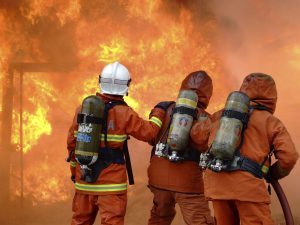
Cylinder Inspection Training: Why a Maintained Cylinder Is a Happy Cylinder
Uncover the importance of gas cylinder inspections and training. Dive deep into ensuring safety, boosting efficiency, and prolonging cylinder life.
Aviation oxygen cylinders are essential equipment for military pilots to perform their missions safely and efficiently. These cylinders provide the necessary oxygen supply to pilots during high-altitude flights where the air is too thin to breathe normally. Therefore, it is crucial to ensure that the aviation oxygen cylinders are maintained in good condition to avoid any malfunction or mishap during the flight.
These five tips will provide you with the top ideas on keeping your military standard aviation oxygen cylinder in shape. These tips include regular inspections, proper cleaning, appropriate storage, careful handling, and timely replacement of components. By following these tips, you can ensure that your aviation oxygen cylinder remains in excellent condition and provides the necessary oxygen supply for safe and successful missions.
Most aircraft used in military service, that routinely fly above 20,000 feet, will have supplemental oxygen on board. At altitudes around 20,000 feet a human may pass out within 5 – 10 minutes without the use of supplemental oxygen. The oxygen may be stored within the body of the aircraft or worn or carried by the crew or occupants. No matter which way the oxygen is delivered, it is stored in a high-pressure cylinder. The cylinder can be large or as tiny as a drink can. Maintaining the cylinder used in military aviation is critical.
Aircraft Oxygen Systems | SKYbrary Aviation Safety
Minor damage, or leaking fittings can cause a rupture of the cylinder. There have been numerous incidents of oxygen cylinders igniting during the filling process and rupturing at altitude.
During a class at a U.S. Military base, we were inspecting cylinders used by special operations, and aviation. I was shown a small cylinder used by high altitude helicopter operations. The division in charge of these cylinders thought that since the cylinder was so small, they did not require an inspection. When informed during the training class that all cylinders should be inspected, they started inspecting all the cylinders in flight operations. They determined that hundreds of the cylinders required hydrostatic requalification. What was more important, upon a proper visual inspection, they found extensive damage to the cylinders. The cylinder had been worn by the pilots and was rubbing against the metal components on the pilots’ seats. The damage was so severe that close to one hundred of the cylinders had to be removed and destroyed before a potential rupture.
Regular Inspection – All cylinders in use must be VISUALLY INSPECTED on a regular basis. The visual inspection will primarily focus on the exterior of the cylinder. All aircraft vibrate heavily during operation. The Visual inspector should look for damage caused by mounting brackets, storage areas or the way the flight crew is carrying them. The damage limits are determined by the size of the cylinder. These limits are covered extensively during our formal training program.
Keep the Cylinder Clean – Oxygen cylinders are going to be exposed to grease, debris, and other hydrocarbons. This includes the cylinder as well as the valves and fittings. Since the cylinder will need to be refilled, keeping the cylinder and valves clean of debris will prevent fires or other issues during the filling process. Keeping the cylinders clean is also covered during our cylinder inspection classes.
Store the Cylinder Properly – In between use the cylinders need to be protected. Not only from damage and hydrocarbons, but secure so they do not fall over. All high-pressure cylinders need to be secured. If a cylinder falls, the weight of the cylinder can easily shear the valve. This could cause a rupture or turn that cylinder into a missile with enough force to blast through walls.
Handle with Care – Oxygen cylinders contained pressurized gases. Mishandling any cylinder can cause catastrophic effects. Dropping it could cause a rupture. Not carrying it properly can cause an embolism. And not storing it properly could also cause sever damage. Not handling the oxygen cylinder with care may be deadly.
Replace Components as Needed – If during the Visual Inspection any components are found damaged or cannot be cleaned, remove, replace, or repair the component. Not fixing a known issue can cause severe damage. You can never forget that the cylinders being inspected are used in aviation. A catastrophic failure on an aircraft has obviously dire consequences.
Learn how to thoroughly inspect, maintain, and clean cylinders used in Military Aviation
Further Reading – Oxygen Devices and Delivery Systems

I enjoy continuing to build the business based on safety since 1999. CTS focuses on the inspection of high pressure cylinders, the maintaining of the valves and basic maintenance of high pressure compressor systems. CTS stays current in techniques and tools to train both the new and novice employee. We publish articles, update training tools and have created an APP to assist during the inspection process.
#cylinder #safety #hazmat #training #cylinderinspectiontraining #cylindex

Uncover the importance of gas cylinder inspections and training. Dive deep into ensuring safety, boosting efficiency, and prolonging cylinder life.

Is your composite cylinder showing signs of wear? Discover when to seek a professional repair service in our comprehensive guide.

29 CFR 1910.101 intro Handling cryogenic cylinders involves working with extremely low-temperature gases that pose unique safety risks. To ensure the safe handling, storage, and transportation of these hazardous materials,

Introduction Firefighters encounter many risks while on duty, including hazardous materials and high pressure bottles. High pressure bottles are used for a variety of purposes in firefighting, including powering hydraulic